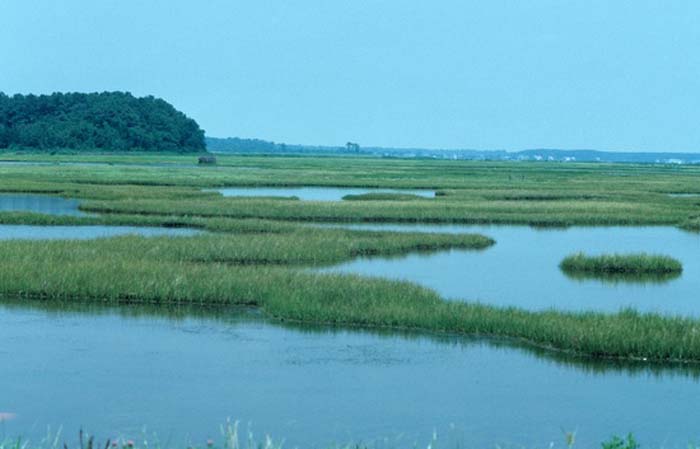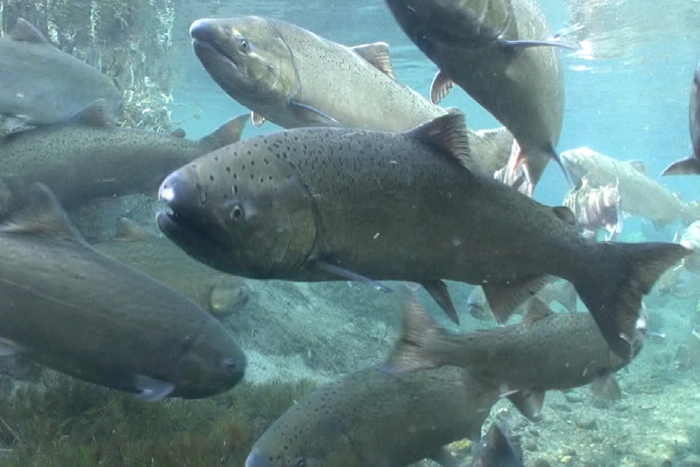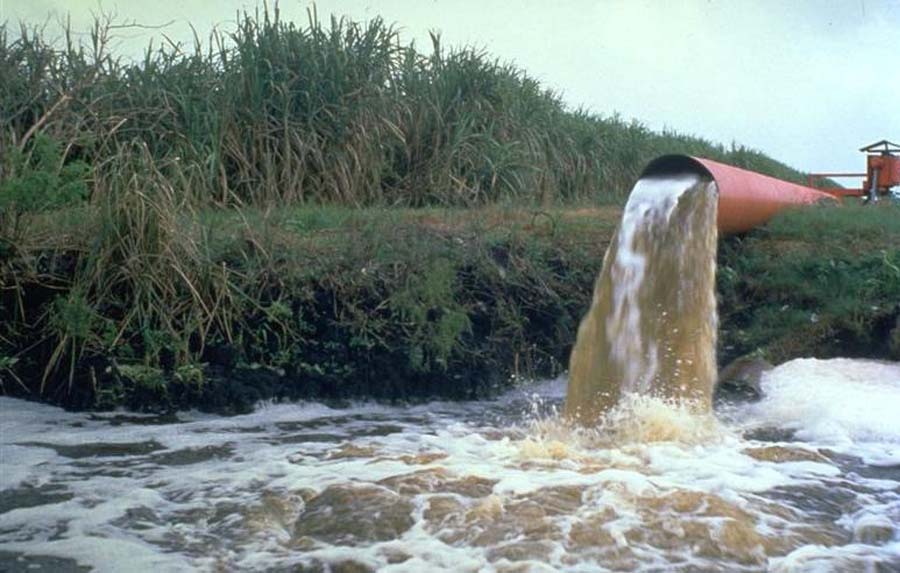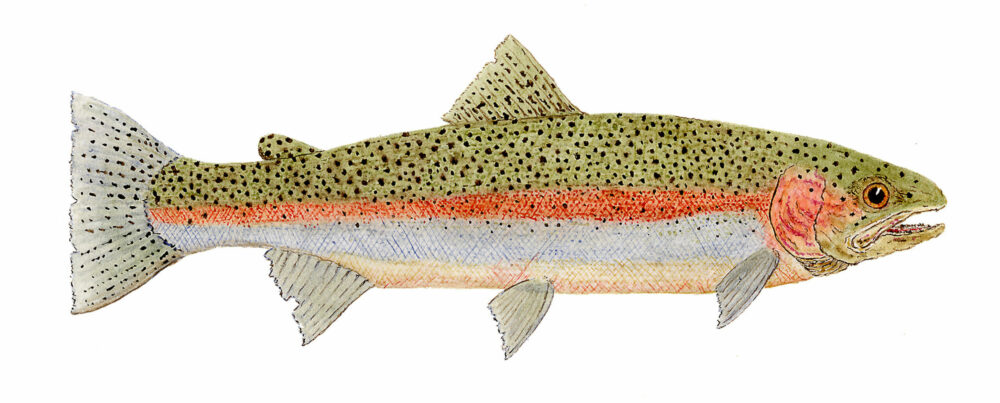
Estuaries provide a rich habitat for ocean and freshwater species for reproduction, feeding, and growing. A NOAA image.
Estuaries are bodies of water located where rivers meet the sea or, in the case of freshwater estuaries, a large lake
By Skip Clement
When it meets the sea, the flowing river spreads out and slows, creating unique conditions not found elsewhere. This variety of environments provides homes for diverse wildlife, including popular fish species.
Estuaries, often called the ‘nurseries of the sea,’ play a crucial role in the life cycle of many marine animals. The changing water depth and chemistry, influenced by the ebb and flow of the tide, create a diverse range of habitats. The presence of plants such as marsh and seagrasses filters the moving water, creating still conditions that allow mud and food particles to settle at the bottom. These variations in habitat make estuaries ideal homes for plants and animals that feed, grow, or reproduce there. They also serve as a significant stopover point for migratory animals such as waterfowl and salmon.
Our coastal estuaries encompass a wide variety of environments, including brackish or freshwater marshes, mangroves, seagrass beds, and salt marshes. These are further enriched by the presence of oyster reefs, kelp forests, and rocky or soft shorelines—each supporting a unique array of creatures. This diversity contributes to the productivity of estuaries, making them among the most productive ecosystems on Earth.
Beautiful and Bountiful
Most fish and shellfish eaten in the United States—including salmon, herring, crabs, and oysters—spend some or all of their lifetime in estuaries.
Estuaries are ideal habitats for fish and wildlife and for people. Twenty-two of the 32 largest cities in the world are located on estuaries. Notable U.S. estuaries include New York Harbor, San Francisco Bay, Boston Harbor, Tampa Bay, and Puget Sound.
Each estuary is a unique ecosystem, displaying its own distinct beauty and attracting a diverse range of visitors. From hunters and fishermen to birdwatchers and photographers, estuaries offer a variety of activities for nature enthusiasts.
Our coastal communities rely on beautiful and bountiful estuaries for recreation, jobs, tourism, shipping, and fishing.

These and other spring chinook salmons, as well as all anadromous and catadromous fish, will pause at the mouths of riverine estuaries before a spawning run, and their offspring will use the same inlet as a haven. Spring Chinook Salmon. Photo courtesy Michael Humling, US Fish & Wildlife Service.
Ecosystem Services
Estuaries filter out sediments and pollutants from rivers and streams before they flow into the ocean, providing cleaner waters for humans and marine life. Their broad, shallow nature allows them to absorb sudden surges of water from storms, floods, and tides, protecting our homes and communities.

Sugar cane water runoff pollutes the freshwater estuaries of Lake Okeechobee and estuaries saltwater in Florida because the fertilizer it uses causes the wrong species of plants like the cat tail to over-propagate, and thus overwhelm a stable ecosystem, choking off water and nutrients to sustain the growth of healthy plants necessary for a stable ecosystem. Florida Dig Big.org.
Economics of Estuaries:
- Estuary regions comprise only 13 percent of the land area of the continental United States, but they make up a disproportionate share of the national economy, accounting for 43 percent of the population, 40 percent of employment, and 49 percent of economic output. In eight states, the estuary regions comprise 80 percent or more of the state’s economy. Since estuary regions contribute so much to our economy, the health of our estuaries concerns all of us. Did you know that:
- Estuaries provide habitat for about 68 percent of the U.S. commercial fish catch and 80 percent of recreational catch.
- Forty-three percent of U.S. adults visit an estuary location at least once a year, generating $12 billion in annual revenue.
- More than 180 million Americans visit estuary and coastal waters each year for recreation and tourism.
- Coastal tourism jobs are growing faster than other economic sectors.
- Recreation provides up to 72 percent of the employment economy in coastal communities.
- Estuaries provide clean water, abundant wildlife, natural beauty, recreation, and historic and cultural assets that boost property values and attract tourism in local communities. One $3.5 million NOAA wetlands restoration project in California increased residential property values by $36.3 million.

Adult steelhead is a rainbow trout that selectively as a species will head to lake and prefer the anadromous life. Illustration of steelhead by Thom Glace.
SOURCES: US Fish & Wildlife Service [FWS], National Oceanic and Atmospheric Administration (NOAA), and New England States’ Dept of Natural Resources [DNR], and those states of the Mid-Atlantic Regions DNRs.






